We’d heard rave reviews of Pablo Neruda’s favorite house, the one in Isla Negra. It was the only one untouched after Pinochet and his followers attacked La Moneda and ransacked La Chascona in Santiago and La Sebastiana in Valparaíso. Despite the suggestive name, Isla Negra is not an island. Neruda named it so for the isolated feeling and the black rocks on the beach.
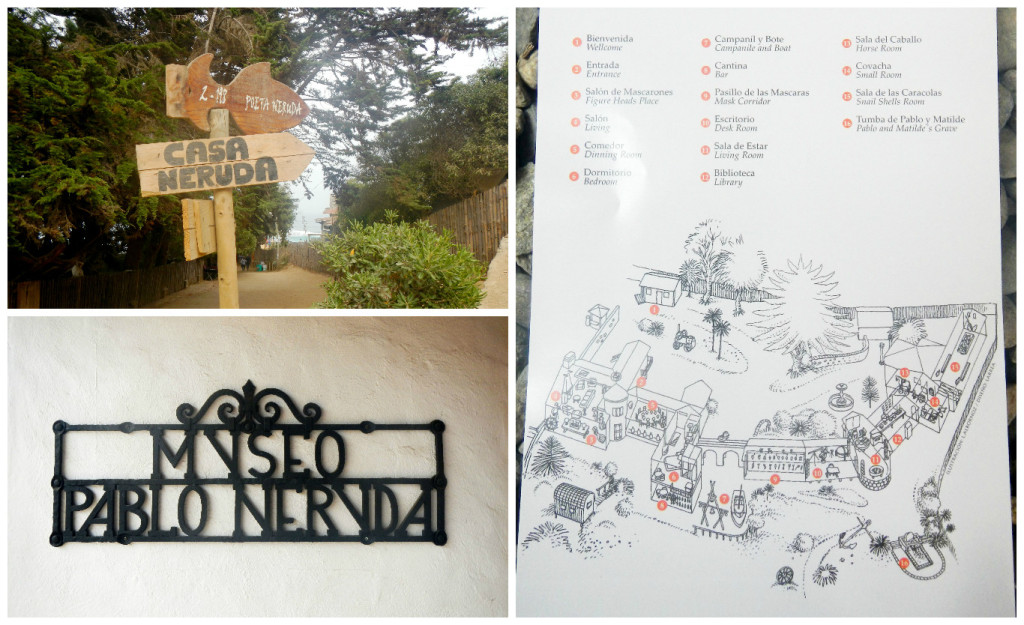 Our expectations were naturally, very high, considering we’d already enjoyed both his other abodes quite thoroughly. What new things could we learn from his main residence, from where he wrote the majority of Canto General, perhaps his most famous and well-known work?
Our expectations were naturally, very high, considering we’d already enjoyed both his other abodes quite thoroughly. What new things could we learn from his main residence, from where he wrote the majority of Canto General, perhaps his most famous and well-known work?
Well, we learned that he built this house when there were no roads going there. That he had to have a team of oxen pull supplies over the estuary.
We learned that Neruda also brought an old train engine to Isla Negra, but insisted that it be pulled by oxen and students, because this would maintain the appearance of an actual working train. Poetic or mad? Both, I assure you.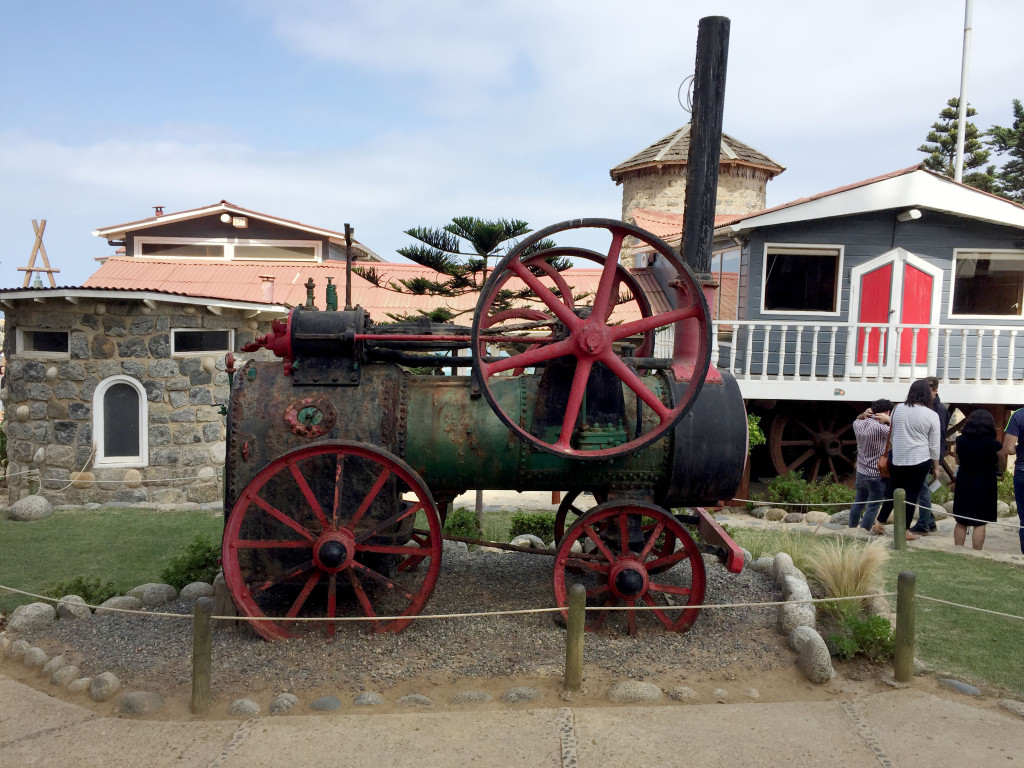
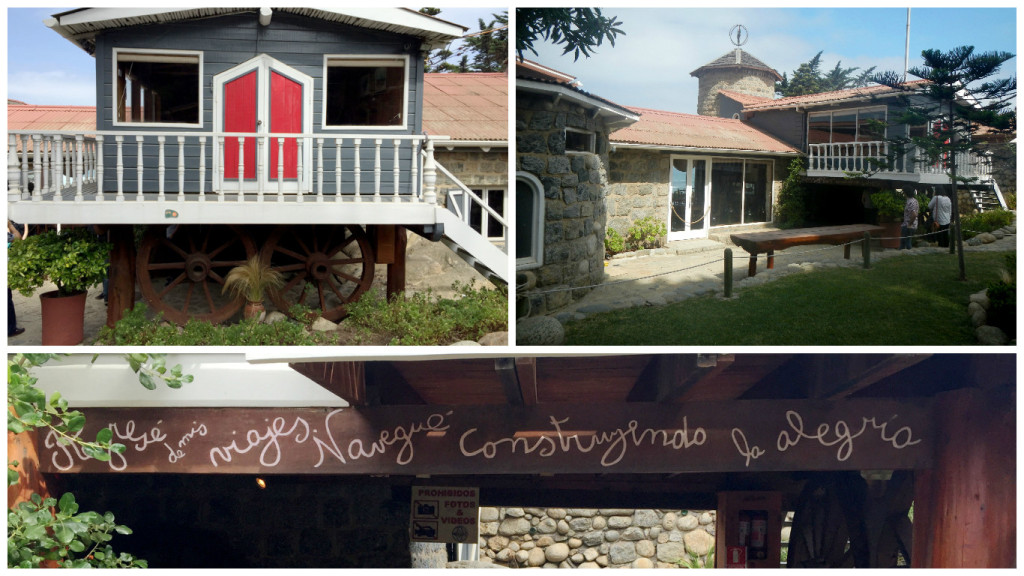
We saw Neruda’s large collection of mastheads, which adorned much of his living room and surrounded his well-used fireplace. One of them is said to cry tears that freeze in the winter, possibly because of her ceramic eyes. Rather than move a large rock that took up a corner of the room, Neruda preferred to let it be, and built up around the rock, decorating it with other mastheads sitting on, and hanging over it.
There were two mastheads in the dining room, a pirate-like male at the head of the table, and at the other end, a graceful female who looked out towards the large dining room window. Neruda placed them opposite each other to spark a romance, but he would joke that it was a failed one because the woman preferred to look out at sea than at her would-be pirate lover.

You had to watch your head as you climbed the stairs to his bedroom. The bed, with a white crochet blanket, was placed at an angle in his room so the sun would rise at his head and set at his feet, toward the ocean. From his bed, he had a fantastic view of the ocean through two enormous windows. As a fellow hat lover, his collection was impressive and he also had a collection of beautifully woven ponchos. He kept a stuffed animal of a sheep by the bed to remind him of his village and youthful roots, and to keep his inner child satisfied.
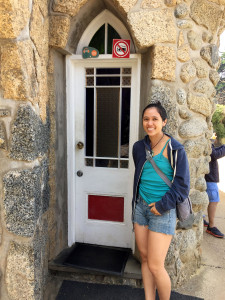 Small walkways and small doors were a theme, that recall the ships and trains Neruda loved. He had a long and narrow hallway of masks from all over the world; even from Africa, the only continent he didn’t travel to in his worldly life. He collected footwarmers, glass (in unique shapes, of course), astronomy diagrams, telescopes, and bugs! Neruda was a self-taught entomologist, and he had quite a collection of beetles, moths, butterflies, and more, lining the walls of room that was built to look like the interior of a train. Narrow, with a curved ceiling, he also had his collection of pipes here, uniquely shaped—like the one shaped as a woman, her leg functioning as the stem and her body the bowl.
Small walkways and small doors were a theme, that recall the ships and trains Neruda loved. He had a long and narrow hallway of masks from all over the world; even from Africa, the only continent he didn’t travel to in his worldly life. He collected footwarmers, glass (in unique shapes, of course), astronomy diagrams, telescopes, and bugs! Neruda was a self-taught entomologist, and he had quite a collection of beetles, moths, butterflies, and more, lining the walls of room that was built to look like the interior of a train. Narrow, with a curved ceiling, he also had his collection of pipes here, uniquely shaped—like the one shaped as a woman, her leg functioning as the stem and her body the bowl.
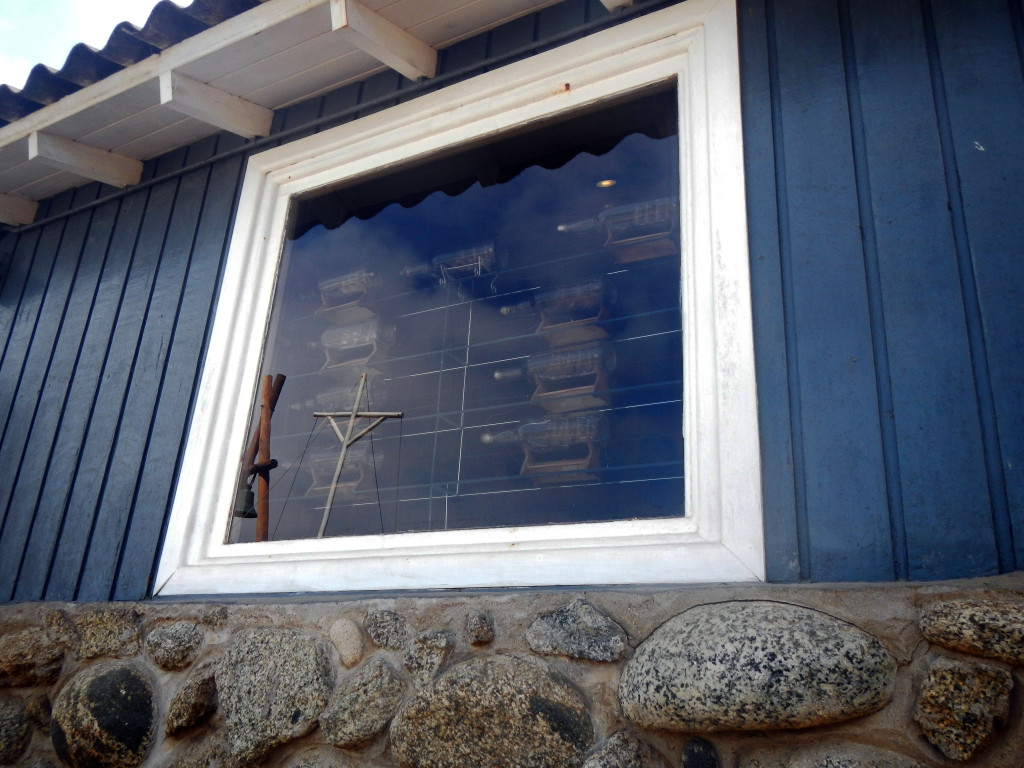
The bar was just below the bedroom, but accessible from outside. He carved the names of many of his friends into the horizontal wooden beams facing the ocean so that he could always be surrounded by his friends while having a drink, and so that he would never have to sleep too far away from them.
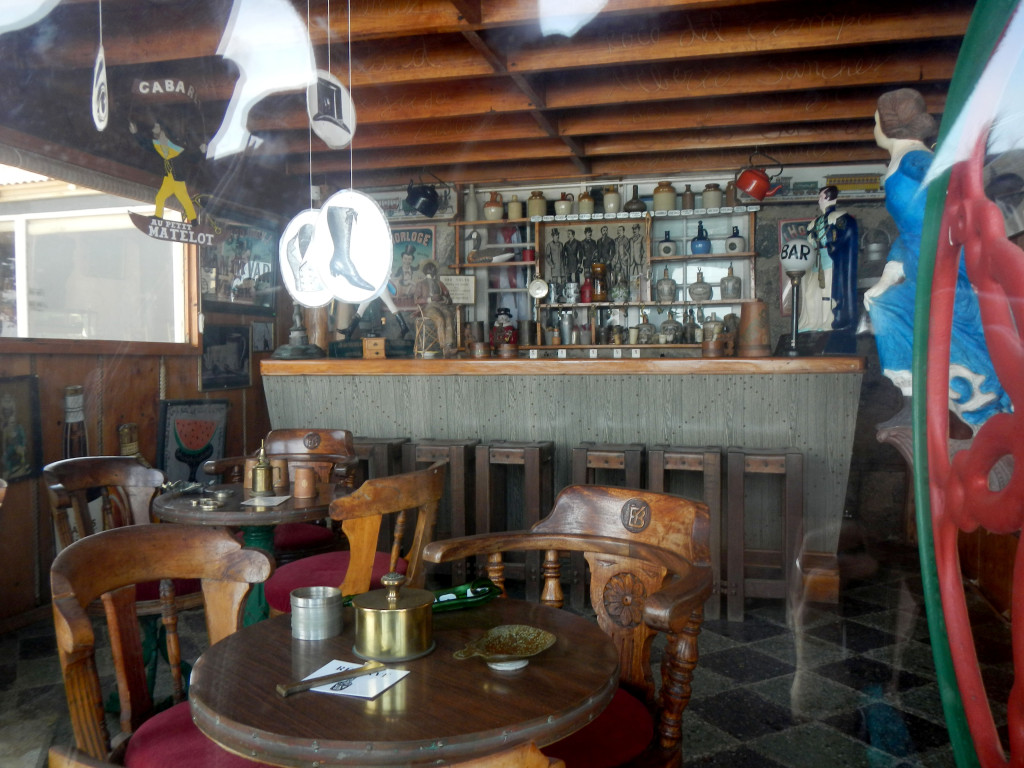
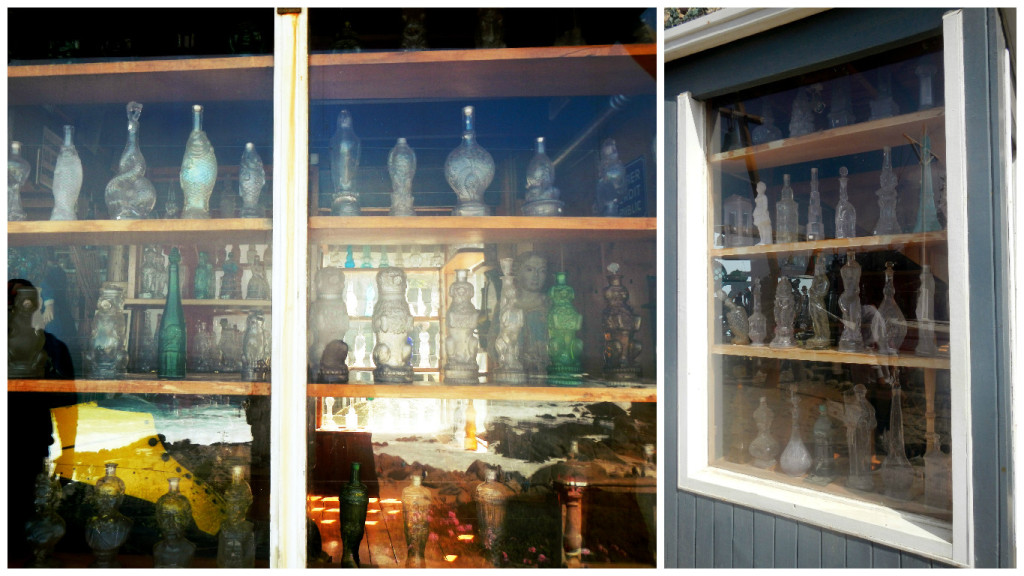
The iconic Isla Negra bells just outside the bar were well-used. Neruda made sure to ring them every time he came home so the neighbors would know he’s in.

 Neruda had a life-size statue of the Moi Kava Kava, the Rapa Nui “Spirit with Ribs” who is said to bring misfortune to tourists, with the left iris removed to transform what could have contained a spirit into an inert object.
Neruda had a life-size statue of the Moi Kava Kava, the Rapa Nui “Spirit with Ribs” who is said to bring misfortune to tourists, with the left iris removed to transform what could have contained a spirit into an inert object.
Neruda hosted many prominent figures in his Isla Negra home while he served as ambassador/senator. The main room where he’d receive these guests held another beautiful and dynamic mosaic-wall-fireplace by his friend María Martner, along with a collection of glass and stone eggs, music boxes, and and a table made from a wagon wheel (a wedding gift to his third wife Matilde) along with various instruments.

Just one room over was a space dedicated to a fabricated horse, with a door and shape suggestive of a stable room. The horse was one he walked by daily as a child. He prized it for its soft tail and would tell the owner that one day he would buy it. When he finally did buy it, the tail had been long gone, victim of a fire.
Nonetheless, he rescued it, brining it to his Isla Negra home where he threw it a welcome party. He sent out formal invitations and insisted his friends dress up and bring gifts. They brought saddles, stirrups and three of his friends brought replacement tails. Rather than hurt anyone’s feelings, he affixed all three tails to the horse (to its butt, head and saddle), and deemed it the happiest of horses!
In this stable room he had a bathroom with devil’s masks around it, to scare away the women since it was a men’s bathroom. Inside there was a single urinal and the walls and door were full of photos of pinup girls and scantily clad women.
His favorite room was next, small and simple, reminiscent of where he spent his childhood in the small town of Parral. It held a prized possession—his father’s old desk. While looking out into the ocean one day, he saw a piece of driftwood, fighting the ocean to get to land. He and Matilde waited all day for the driftwood to reach them, a gift from the ocean. Previously the hatch of a ship, Neruda fashioned it into a desk, leaving the hinge on it. He spent most of his time writing on Isla Negra in this room on this driftwood desk.
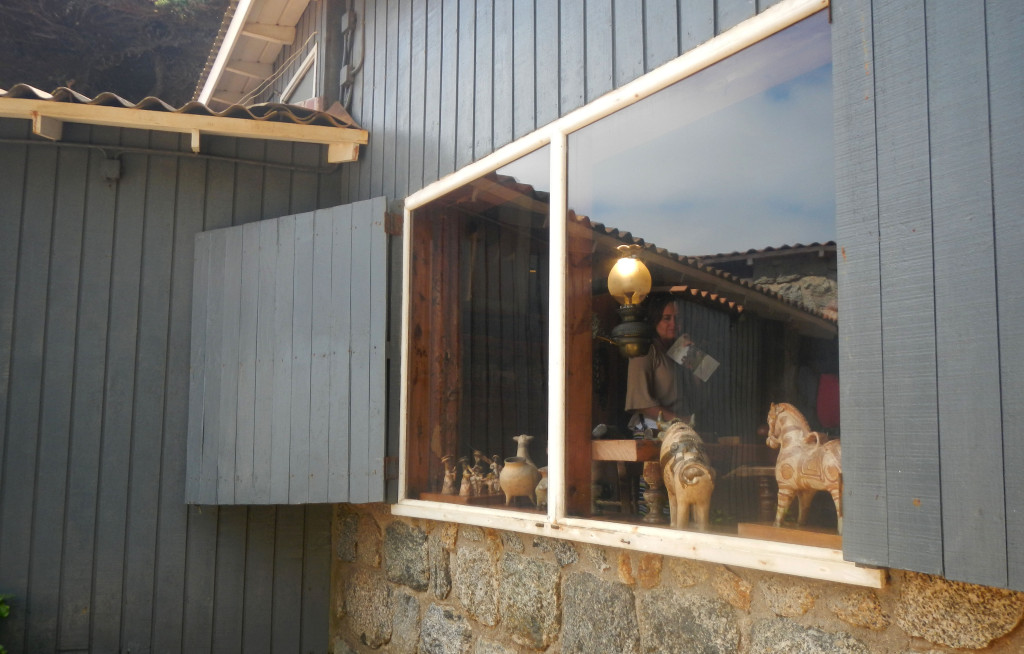
The final room we saw was built after Neruda’s death. He’d expressed the wish for a place to house his seashell collection and the Neruda foundation built a beautifully modern one.
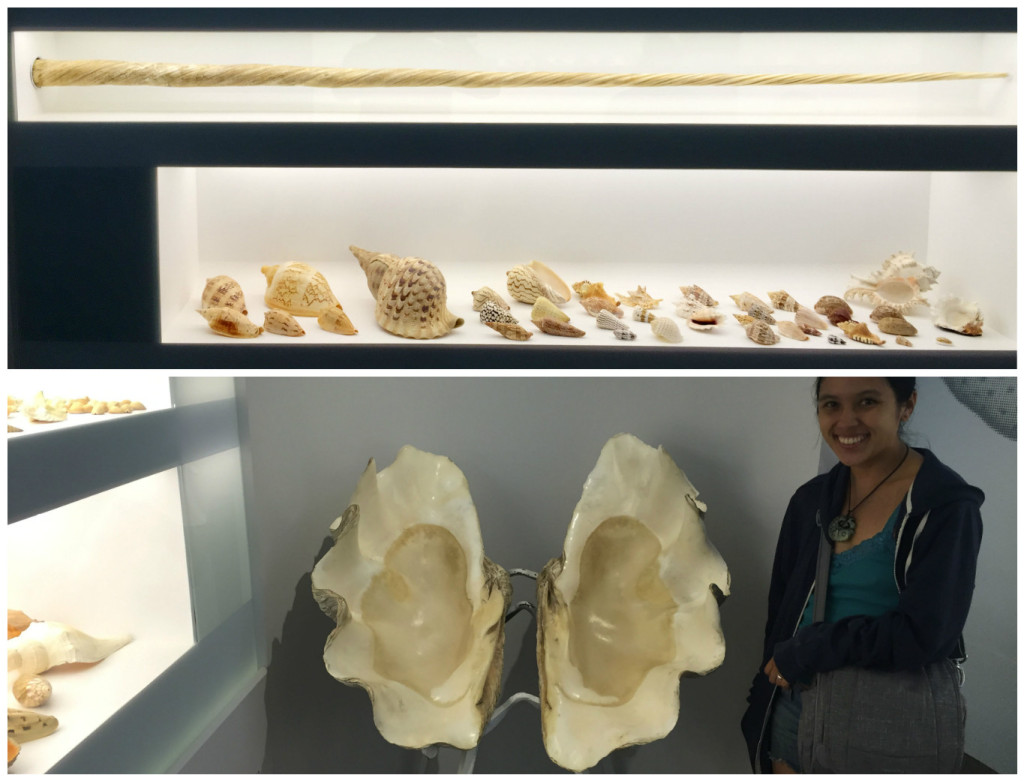
Many years after his death and Matilde’s they were ceremoniously buried on the Isla Negra property. “Companions, bury me in Isla Negra,” he wrote in Canto General, “in front of the sea I know, to each wrinkled area of stones/ and to the waves that my lost eyes/ won’t go back to see…”
Neruda’s legacy lives on, not only because his houses and gravesite are now museums and highly visited points of interest, or even because of his international recognition as a literary great. All of his houses now serves as a community cultural center, spaces where art is encouraged and rewarded. The Neruda foundation has poetry contests and open mic nights for the community and youth.
I leave you with the view of the house, the rocky ocean, and a quote painted on a wall by his house on why he loved this place:

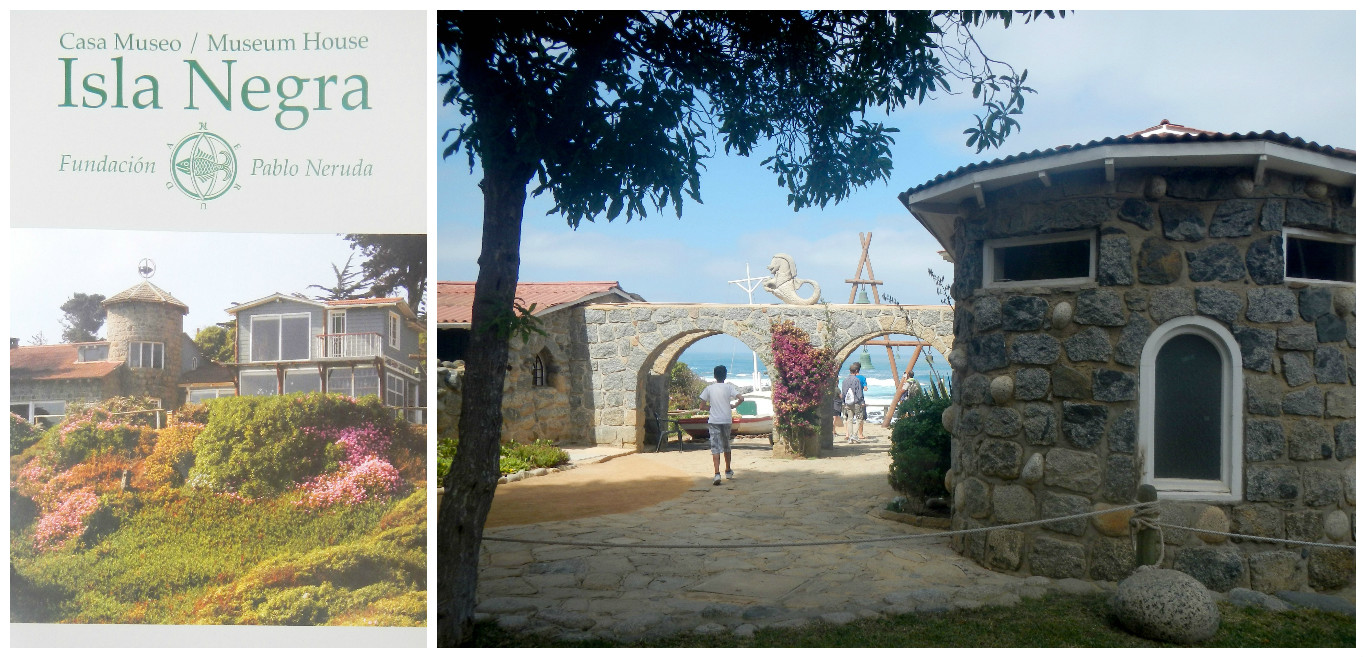
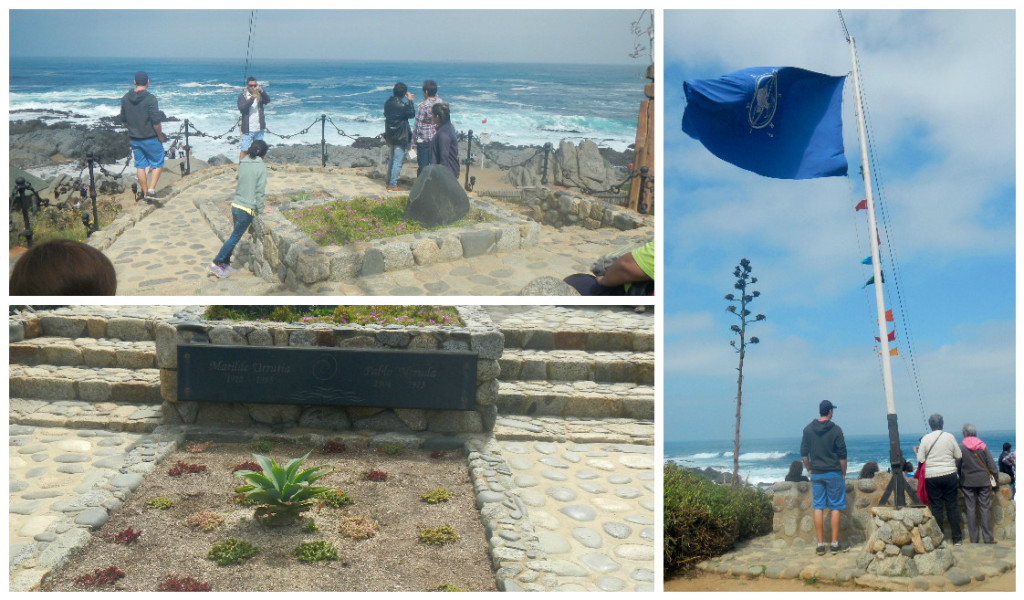
Beautiful and just as interesting as his other houses.
He wasa very unique person.
Thank you for sharing
Amazing man! He truly lived his dreams. Thank you!
Gorgeous! I’m definitely visiting this when I plan a trip to Chile!
Yesss it’s a do-not-miss destination!